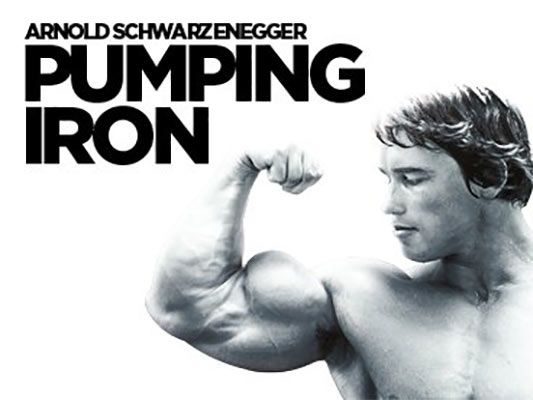In 1975, the first multi-racial sporting event ever held in South Africa, the Mr. Olympia contest, was filmed by photographer and documentary filmmaker George Butler. That movie was Pumping Iron. In that over a century of Apartheid was beginning to weaken, the event held historic significance.
Pumping Iron was an independent film that was made and eventually released to an international audience. Pumping Iron created a following for bodybuilding as a sport, made careers for many of the contestants, made international superstars of at least two of the top musclemen, and created a multi-billion dollar market for bodybuilding equipment, trainers, and thousands of gyms to cater to new body building enthusiasts.
Early in 1976, however, it appeared that the film George Butler was making would never be completed, let alone displayed for paying audiences. It takes money to make movies, and Butler had run out. Having invested months in following the contestants around as they prepared for the contest, he found himself stopped in his tracks when his equipment was impounded for unpaid bills.
It became imperative that he find a way to raise the capital needed to complete Pumping Iron. The idea he came up with seemed like a long shot, but definitely worth a try. He persuaded the Whitney Museum of Art to sponsor a special performance art exhibit featuring the well-developed bodies of the Mr. Olympia winner, a then relatively unknown Arnold Schwarzenegger, and two other contestants. The exhibit was accompanied by a panel discussion on artistic treatment of the male art form throughout history. The event was billed as “Articulate Muscle: The Male Body in Art,” and was promoted to New York patrons of the arts as a display of bodybuilding as a unique form of self-expression.
The gamble paid off beyond anyone’s wildest expectations. Sophisticated art enthusiasts, including such legends as Andy Warhol and Robert Mapplethorpe joined ordinary citizens interested in bodybuilding. Crowds of art patrons who undoubtedly wanted to see the beefcake converged on the Whitney, despite a raging blizzard. Besides the literal “piles of money” made on the event, it convinced investors to help Butler complete Pumping Iron.
When the film, Pumping Iron, was released, it quickly became a cult classic. The impact of the movie continues today. Arnold Schwarzenegger, who had already made a few forgettable films, became an international sensation. Lou Ferrigno, one of the runners-up for the Mr. Olympia title, began a career soon thereafter by being cast as the angry green giant known as “The Incredible Hulk”. George Butler, who produced and co-directed the film, went on to make many more films, often returning to the sports world for stories of survival and triumph.
Perhaps the greatest influence of this film was the impact on bodybuilding as a competitive sport. Before this time, it was considered a bit of a sideshow. Pumping Iron showed the world the very human personalities behind the bulked-up bodies. Even though some scenes were later admitted to have been dramatized after the fact or even fabricated to add drama to the story, the characters became so real to the public that many set out to emulate them.
In a decade characterized by increased interest in physical fitness, the movie was a catalyst to inspire record numbers of Americans to lift weights and pursue bodybuilding. An entire industry was born to meet the demand for trainers, training equipment, training facilities, and instruction videos and books. Gold’s Gym, the site of much of the training in Pumping Iron, was founded in 1965 in Venice, California. When the film was released in 1976, there was only one Gold’s Gym in the world. Soon the demand for training facilities spurred its growth into a chain of over 500 facilities all over the world. Twenty-five years later, there were over 3,000.
The Mr. Olympia contest, which was launched by the International Federation of Bodybuilders in 1967, is now considered the premier physique competition, and is held annually in Las Vegas. Schwarzenegger hosts a massive celebration of physical culture every winter. Approximately 12,000 athletes and 80,000 spectators converge on Columbus, Ohio to compete in The Arnold Classic in a wide range of sporting events, including karate, arm wrestling, cheer-leading, and of course, bodybuilding. All of this excitement about the previously ignored sport of bodybuilding can be attributed to the impact of the little documentary that George Butler made called Pumping Iron.





